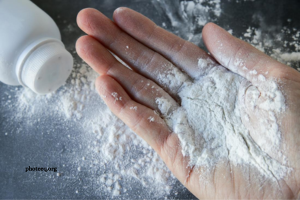Talcum powder, a not unusual household product used for personal hygiene and skincare, has been thrust into the spotlight due to mounting court cases alleging a hyperlink among talc-primarily based powders and ovarian most cancers.
As the prison battles unfold, it’s far critical to delve into the clinical evidence underpinning these claims.
This article aims to research the research, explore the controversies, and shed light at the complicated interplay among talc and ovarian most cancers.
Understanding the Allegations: Talc and Ovarian Cancer Connection
The controversy involves using talcum powder, a mineral composed of magnesium, silicon, and oxygen, and its ability to be associated with ovarian cancer. Plaintiffs in complaints claim that the use of talc-primarily based powders in the genital vicinity can result in the development of ovarian most cancers, pointing to the presence of talc debris inside the ovaries of some patients.
Early Studies and Concerns: A Historical Perspective
The concerns about talc and ovarian cancer aren’t new. As early as the Seventies, studies began to emerge suggesting a probable hyperlink between talcum powder use inside the genital region and an improved chance of ovarian most cancers. However, these initial studies encountered challenges in terms of study design and sample size, resulting in inconclusive findings. For the latest information on talc powder and ovarian cancer lawsuits, you can visit this link.
Epidemiological Studies: Examining Population Trends
Over the years, numerous epidemiological research have sought to investigate the potential hyperlink between talc use and ovarian most cancers. Epidemiological research includes studying patterns, reasons, and effects of fitness and disease conditions in described populations.
Positive Associations in Some Studies
Several studies have stated a nice affiliation between talc use within the genital place and an accelerated hazard of ovarian most cancers. These findings have contributed to the clinical basis for a number of the proceedings against talc producers.
Inconsistencies and Confounding Factors
However, the body of proof is not without its inconsistencies. Some studies have failed to set up a clear connection, and confounding elements, inclusive of the co-occurrence of talc use with other variables like hormone substitute therapy or genetic predisposition, have complex the interpretation of effects.
Biological Plausibility: How Talc Particles May Reach the Ovaries
The mechanism through which talc particles, when used in the genital location, may reach the ovaries is a crucial factor of the clinical debate. Some researchers endorse that talc debris ought to tour via the reproductive tract and reach the ovaries, potentially inflicting irritation and selling the improvement of most cancer cells.
Talcum Powder Composition: Asbestos Contamination Concerns
Another layer of complexity arises from the capability of contamination of talcum powder with asbestos, a regarded carcinogen. Asbestos is a clearly taking place mineral frequently observed in close proximity to talc deposits. If talc-based total powders are infected with asbestos and used in the genital area, there may be an extended risk of ovarian cancer.
Regulatory Measures and Product Testing
Regulatory businesses, which include the U.S. Food and Drug Administration (FDA), have set limits for asbestos in talc products. However, worries persist, and product testing continues to be a focus in assessing the protection of talcum powder.
Challenges in Establishing Causation: Legal and Scientific Perspectives
The felony panorama surrounding talc and ovarian most cancers lawsuits is complex, requiring an illustration of causation – an immediate hyperlink among talc use and the development of ovarian cancer. Establishing causation poses challenges, as prison and medical standards ought to align for a success case.
Legal Burden of Proof
In felony terms, plaintiffs ought to reveal that their use of talcum powder directly triggered their ovarian cancer. This burden of evidence is a substantial venture, thinking about the multifactorial nature of cancer improvement and the myriad variables that make a contribution to an individual’s fitness.
Scientific Causation Criteria
Scientifically, organizing causation entails assembly sure criteria, including consistency of affiliation, strength of affiliation, dose-reaction dating, and organic plausibility. Meeting these standards is essential for the scientific community to just accept a causal relationship between talc use and ovarian cancer.
Industry Response and Litigation Trends
As the number of court cases against talc producers maintains to upward thrust, the enterprise has confronted scrutiny for its marketing practices and product protection. Johnson & Johnson, a distinguished talc powder manufacturer, has been at the forefront of those legal battles, with several complaints alleging failure to warn clients approximately the capability of most cancers associated with their merchandise.
Internal Documents and Allegations of Withholding Information
Internal files from talc manufacturers, acquired through criminal proceedings, have fueled allegations that corporations were aware of potential fitness dangers related to talcum powder however failed to adequately warn clients. These allegations have intensified the prison and public family members demanding situations confronted via the enterprise.
Ongoing Research and Regulatory Developments
As the felony battles unfold, ongoing research and regulatory developments preserve to shape the panorama of talc and ovarian most cancers discussions.
Research Initiatives and Funding
Researchers are actively pursuing in addition studies to address gaps in present knowledge. Additionally, investment for unbiased research is important to make certain unbiased investigations into the capacity health effects of talcum powder use.
Regulatory Scrutiny and Consumer Education
Regulatory businesses are tracking the scenario closely, reevaluating safety standards, and providing guidance to clients. The significance of purchaser training concerning product ingredients, ability dangers, and safe usage practices has also come to the leading edge.
Navigating Consumer Choices: Talc-Free Alternatives and Labeling Transparency
Amid the controversies, purchasers are increasingly more searching for options to talc-based total powders. The market has answered with an array of talc-loose merchandise, and there is a developing call for transparency in labeling to tell consumers about the composition of personal care merchandise.
Conclusion
The intersection of technological know-how and law in the talc and ovarian most cancers complaints highlights the complexity of addressing fitness-associated allegations. Scientific inquiry maintains a pivotal position in knowledge of the capacity dangers related to talcum powder use, while the criminal system navigates the demanding situations of establishing causation and ensuring accountability.
As the criminal battles progress, it stays critical for consumers to stay informed, severely compare scientific proof, and make knowledgeable picks concerning private care merchandise. The convergence of medical research, regulatory oversight, and legal complaints will ultimately form the trajectory of this multifaceted trouble, influencing the panorama of product protection and purchaser safety.





